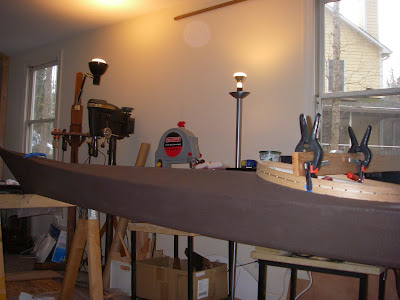Enough snow in Michigan. It'll all still be there in a few weeks for my trip, but it's sounding like there's more than enough.
Speaking of wintery adventures, The January issue of the
National Geographic has 2 stories related to Norway’s historic figure
Fridtjof Nansen, a polar scientist-explorer (among other things), whose wintery adventures are of unimaginable hardship.
The first story, “1,000 Days in the Ice” recalls Nansen’s journey of the
Fram in 1893 to 1896. During this expedition, Nanson deliberately set out to become locked in by the ice, and to continue riding the floes towards the North Pole. When forced off the ship, with companion Hjalmar Johansen, they continued the journey by sled dogs and kayaks. They didn’t quite make it to the pole, yet at the time it was the largest single advance of Arctic exploration. The return trip home was even more adventurous and harrowing, surviving on walrus and polar bear meat and blubber. They became national heroes in Norway, world celebrities, and had proved many theories about the Arctic.
The second is a polar saga called “Chasing Nansen’s Ghost”. Two modern day Norwegian adventures set out at the North Pole, to follow the same return route of Nansen and Johansen, using skis, kayaks, and para-sails instead of dogs. They are professional adventurers, and mountaineers, and had access to communication and navigation equipment. Their journey was 15 weeks, difficult, adventurous, and no less harrowing for today’s time.
Theirs was a journey of cold, ice, and snow, and hardships I cannot imagine, and will not, nor care to experience. But I am working on my own winter adventure. A
Kruger Canoe sponsored winter paddling session on the
Big Manistee River, January 9-11th in Michigan. We are planning a great paddle, about 55 miles, with the “focus on efficient and safe winter camping techniques, hypothermia prevention and recovery, as well as an in depth look at fire starting kits and techniques”.
It’ll also be something of a reunion of some WaterTriber’s. Kristen (
KiwiBird) is driving up with me, and we’ll hook up with
Mark (ManitouCruiser), Brian (kapakahi, previously daBiscuit, and blogger
Capt'n), John (RiverJohn), and Jack (SeaCamp), and have an opportunity to meet other like-minded adventurers.
They've been getting lots of snow this winter, lets just hope weather doesn't prevent us from getting up there. And that this girl from Hawaii, now living in the milder climates of the South East, can find enough warm winter camping clothes/gear :)

Check it out at the new
Kruger Canoes Adventure Blog.







 But when we get a really nice snow fall, our whole neighborhood comes out to the "big hill" with whatever we can find. It's lots more fun being creative.
But when we get a really nice snow fall, our whole neighborhood comes out to the "big hill" with whatever we can find. It's lots more fun being creative.
 I'm coming next month for the canoeing,
I'm coming next month for the canoeing, 






